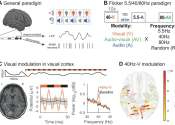Research reveals how sighted and blind people's brains change when they learn to echolocate
New research shows that the brains of sighted and blind people adapt in a similar way when they learn to use sound echoes to understand the world without vision.
Jun 21, 2024
0
37









